Video is continuing to grow in popularity and importance, which means it’s vital to stay on top of the latest advances and statistics in order to create a strong digital video marketing strategy
Video is a highly effective form of content and its popularity has gone hand-in-hand with the rise of social media. Despite the fact that so many of us consume online videos on a daily basis, many marketers still aren’t using video as part of their digital marketing strategy or aren’t seeing the best results.
In order to inform your video marketing and help you get the best possible ROI from campaigns, we’ve compiled some statistics that could help you get to grips with video.
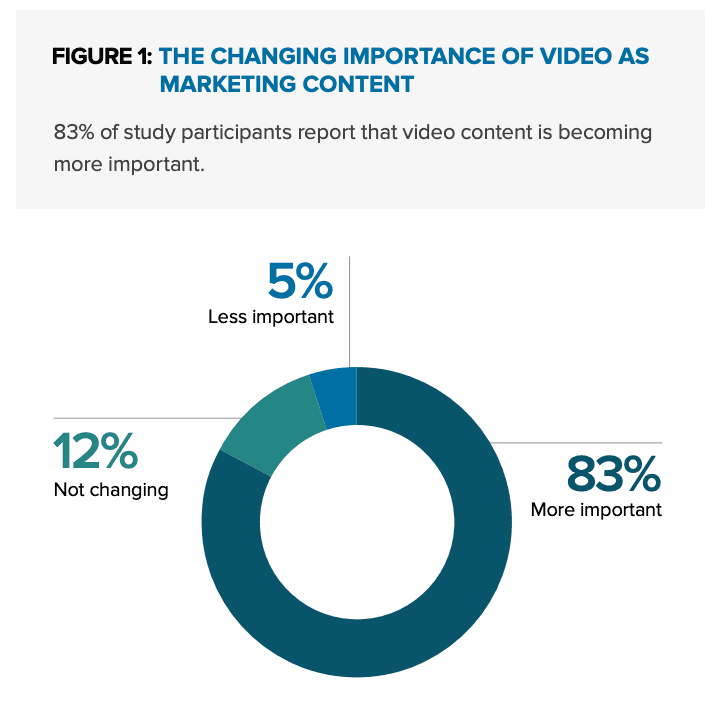
83% of marketers believe that video is growing in importance
Video already gets great results, but it looks as though marketing professionals are expecting even more from this content type. ‘The State of Video Marketing 2018’ from Demand Metric found that 83% of marketers believe that video is becoming more important.
In comparison, only 12% said its importance isn’t changing and under 5% said that it will become less important.
With more marketers believing that video is going to become more important, there is a high chance that more and more videos are going to be used as part of online marketing campaigns. This means that starting your experiments now to find types of videos that work for your brand could help you get an effective strategy in place before the online space becomes saturated with more video content.
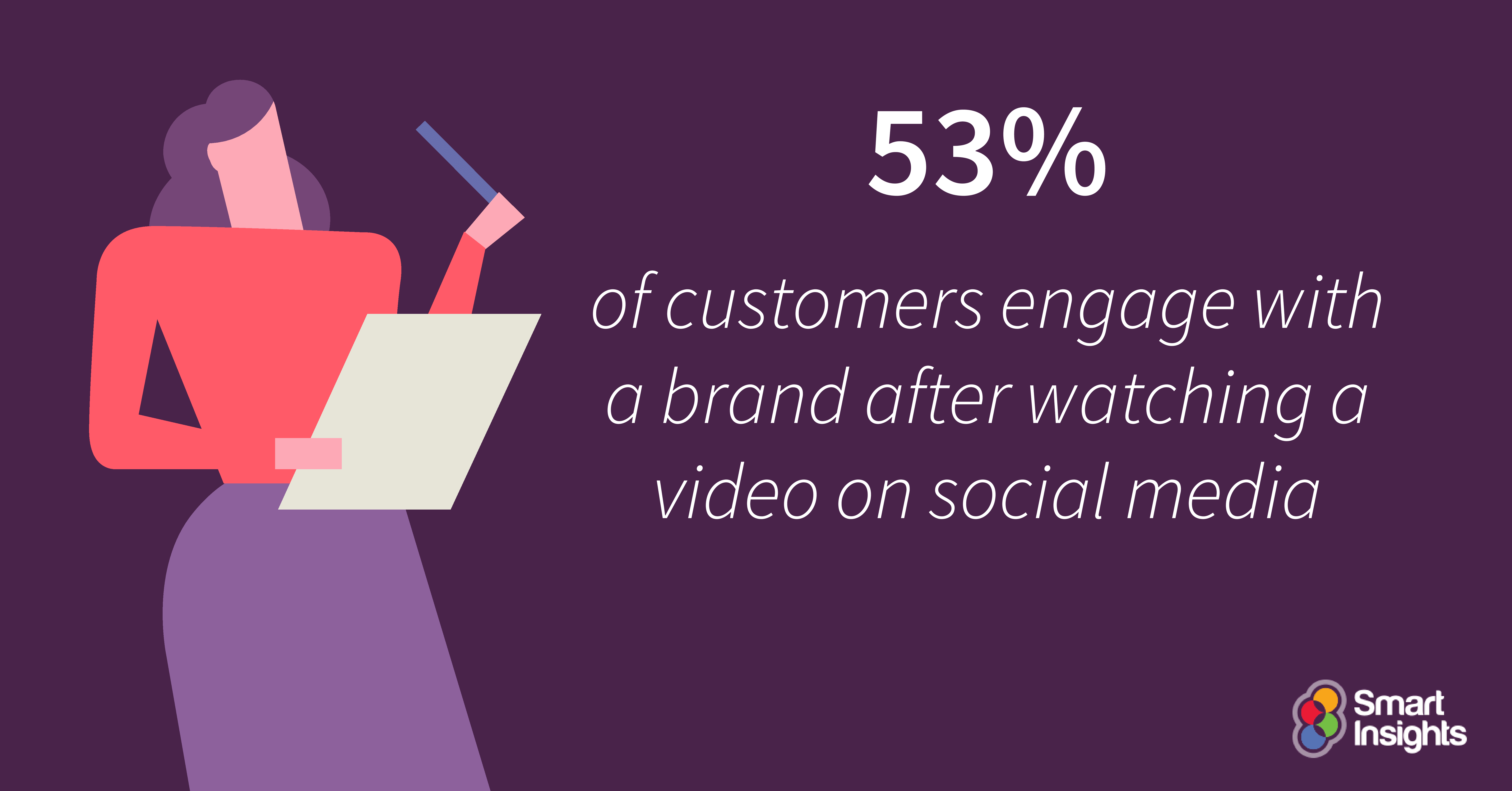
53% of consumers engage with a brand after viewing a video on social media
As well as being engaging, videos are a great way of increasing brand awareness and driving potential customers to your social media pages or websites. This is proven by the fact that Brightcove’s 2018 Video Marketing Survey found that over half (53%) of consumers report that they engage with a brand after viewing one of their videos on social media.
When it comes to Millennials, this figure increases, with 66% engaging with a brand after watching a video in their social media feed. This suggests that videos could be an effective form of advertising, as well as a great opportunity in terms of your social media marketing strategy.
In terms of how people engage with a brand after watching a video, 20% reported visiting a brands’ website while a further 20% then conducted research into the brand. On top of this, 23% of people (30% of Millennials) want a video to be accompanied by a link that allows them to directly purchase a product, showing that product videos and shoppable content offer a lot of opportunity.
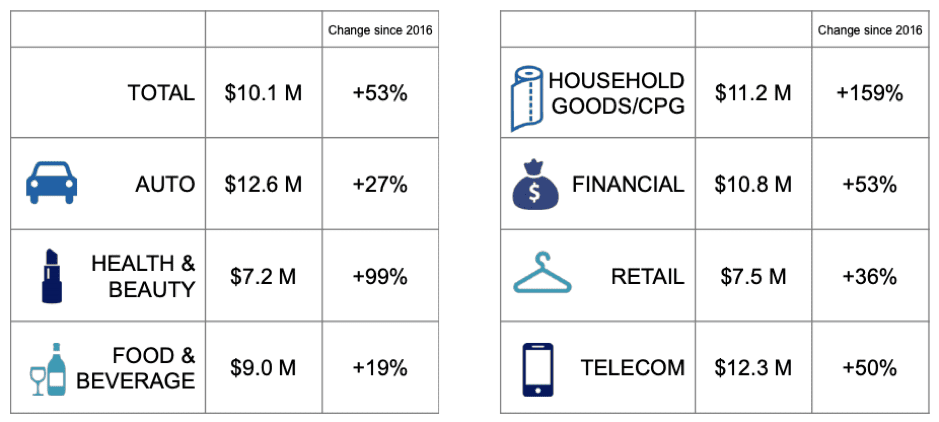
Digital video advertising spend has increased by 53% since 2016
All market sectors have seen an increase in investment in digital and mobile video advertising, according to IAB’s 2018 Video Ad Spend study. Overall, since 2016 video ad spend has increased by 53% and is likely to continue to rise.
In terms of individual market sectors, household goods has seen the biggest increase in digital video advertising spend, with 159% more being spent on this form of content. This is followed by health and beauty with a 99% rise in video spend.
This trend in continued spend increase is also set to continue, with over half (54%) of marketers looking to increase online video spend over the next 12 months.
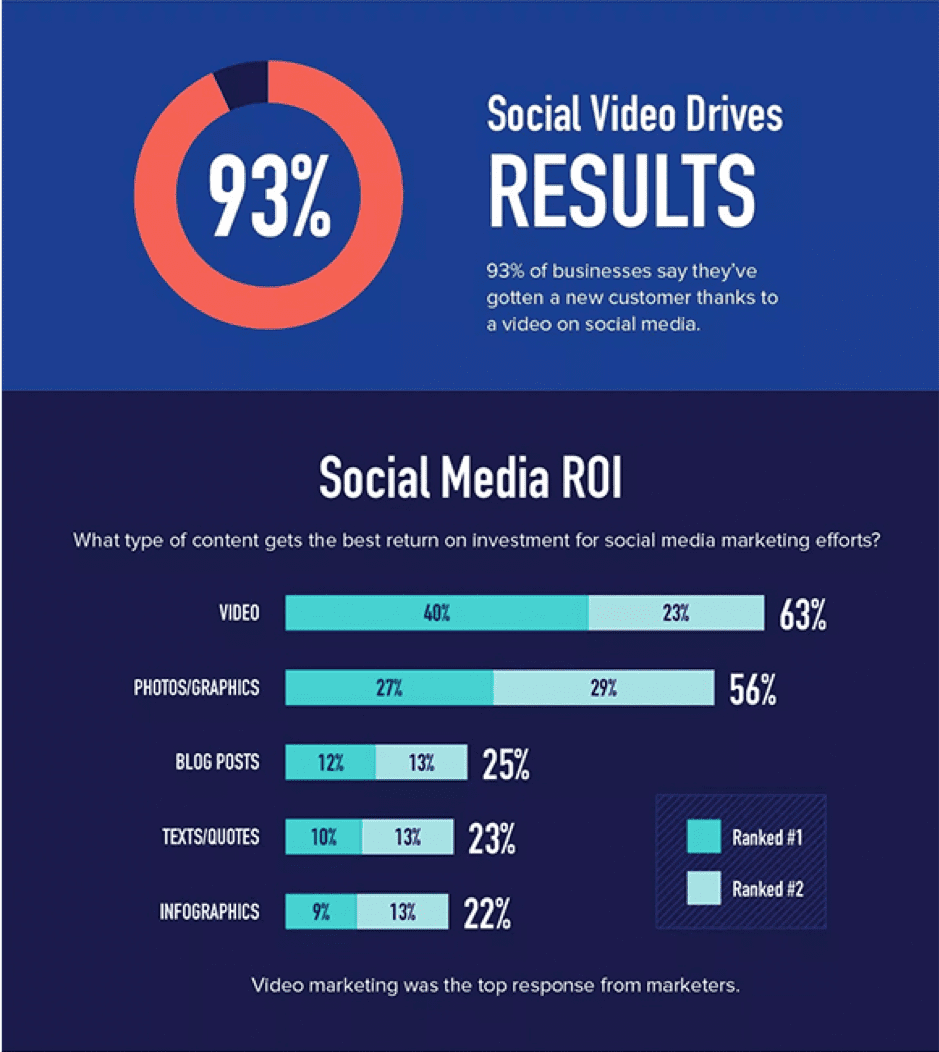
88% of marketers are satisfied with their social media video marketing ROI
Not only are marketers happy to increase spend on digital videos, they are reportedly happy with the results they offer. The majority of marketers (88%) are satisfied with their social media video marketing efforts’ ROI, suggesting that the majority of brands are seeing positive results.
In fact, when asked what type of content gets the best return on investment when it comes to social media, video was the top response. Some 40% ranked it as number one for ROI, with a further 23% putting video in second place.
In addition to this 80% of marketers are happy with the ROI of their video advertisements on social media, showing the success of this form of advertising.
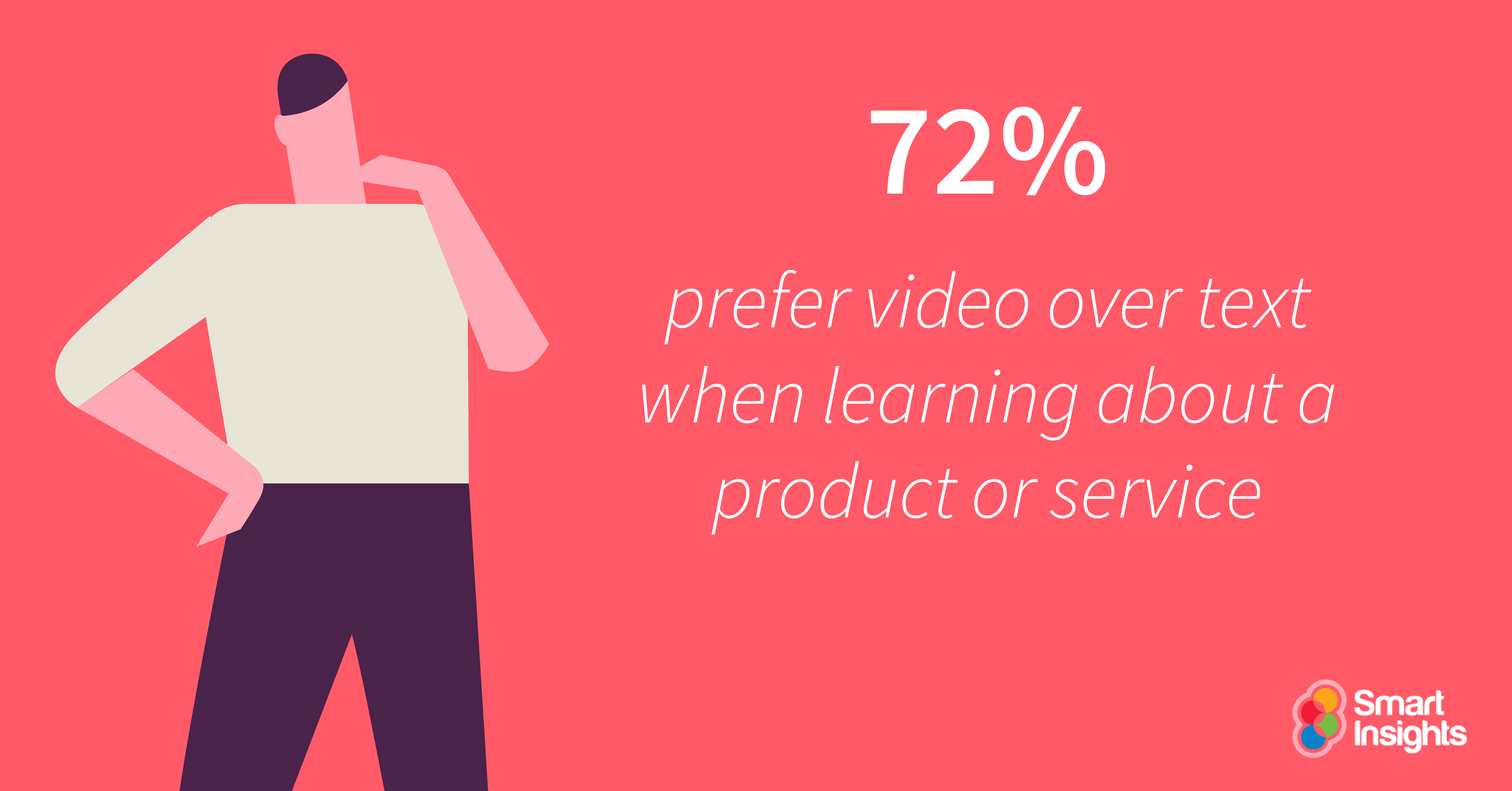
72% prefer video over text when learning about a product or service
When text and video are presented on the same page, 72% of people prefer to learn about a service or product via video. While watching a video may not necessarily be quicker than reading a text description, it offers a chance to see the benefits of what is on offer.
On top of this preference, 83% of consumers said they would consider sharing a video they enjoyed with friends, helping to increase brand awareness, engagement and ROI even more.
Embedding your videos on your website to provide additional product or service insights, as well as sharing them on social media could be a beneficial strategy, especially since videos could offer higher engagement rates than text alone.
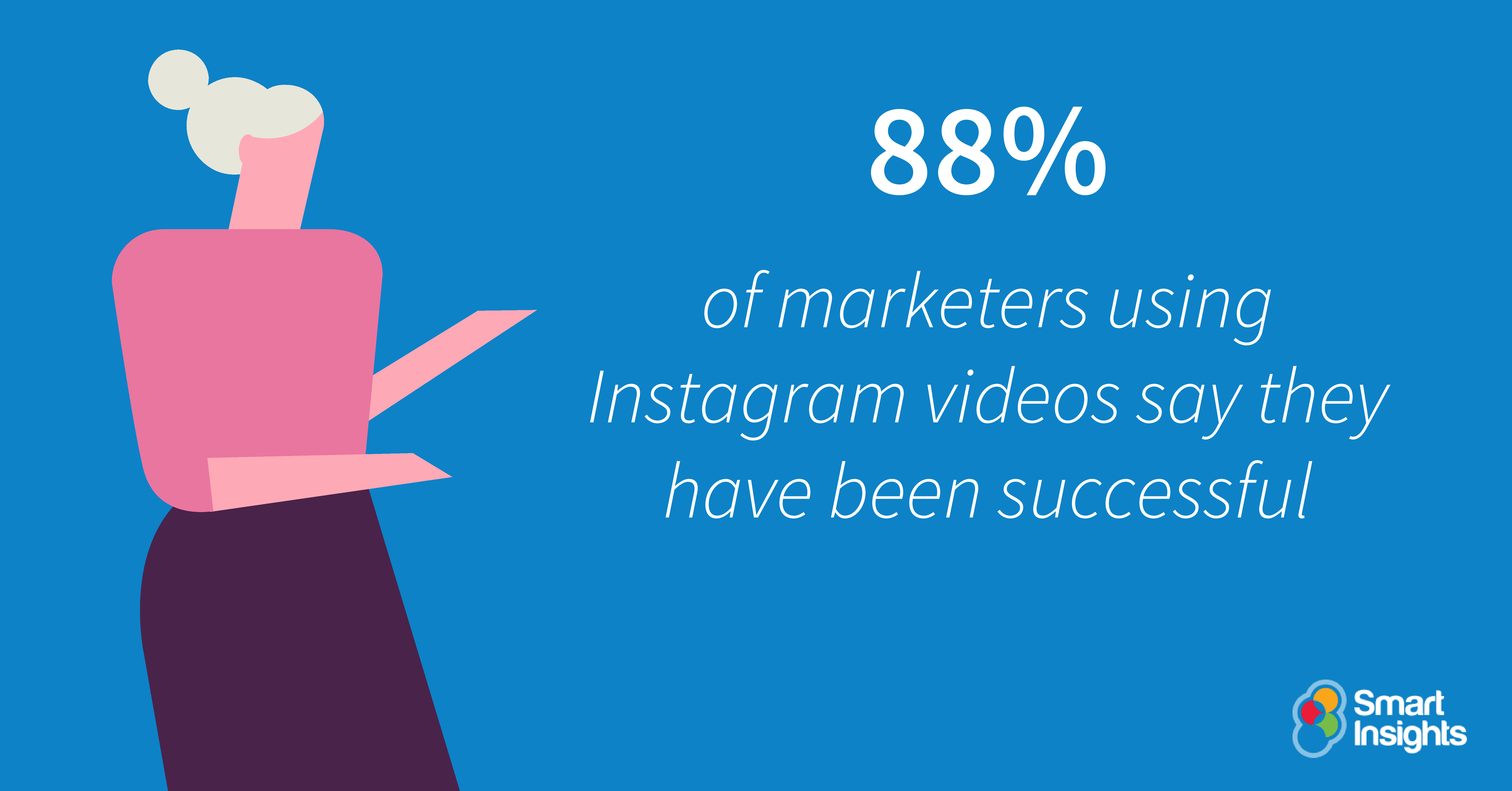
88% of marketers using Instagram videos say they have been successful
Instagram has been the most successful social media platform when it comes to video, with 88% of marketers saying it has been successful for them. While it may not be as broadly used as other platforms for sharing videos (51% of marketers said they used it), the majority of those who do post videos to Instagram are happy with the ROI the platform offers.
Even better, 75% of Instagram users have taken an action, such as visiting a website, after viewing a brand’s content on the platform.
LinkedIn is also showing good levels of success, although the platform still isn’t being used as often as Facebook. Just over half (51%) of marketers have posted videos to LinkedIn, but 84% said that doing so has been successful, which is a 9% increase compared to last year’s results.
In comparison, 84% of marketers have used Facebook as a channel for video marketing, with 85% saying that doing so has been successful. This level of satisfaction has actually fallen from the 87% who said Facebook videos worked in 2018.
YouTube is also seeing falling satisfaction levels. The same number of marketers (87%) said they have used YouTube as a channel in 2019 as in 2018 and yet success has declined, with 80% saying it worked compared to 90% last year. This could signal a move away from YouTube as sharing videos via social media platforms becomes more prevalent.
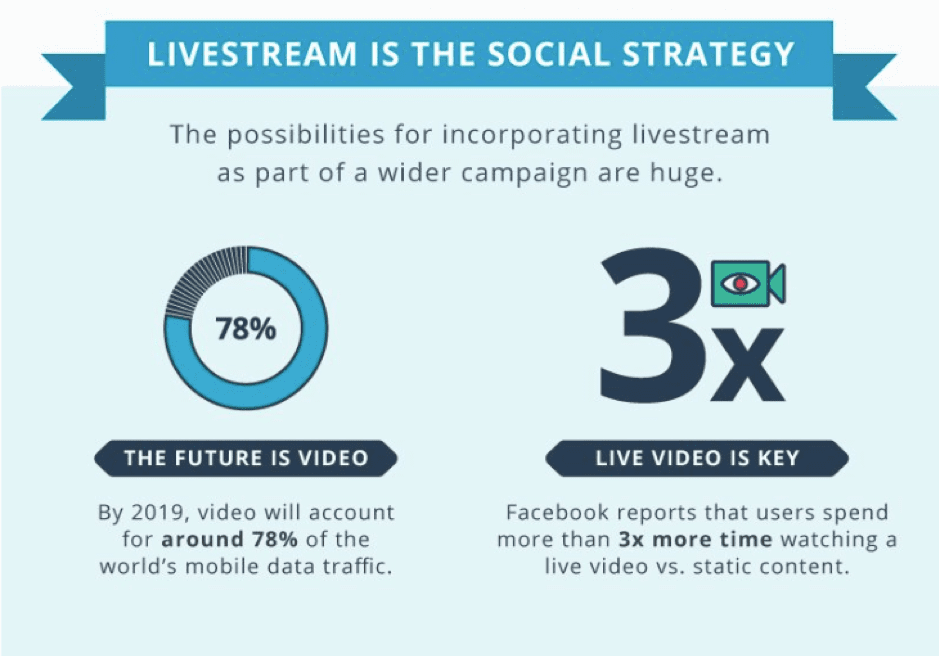
Video will account for 78% of mobile data traffic this year
This year is likely to see video accounting for around 78% of mobile data traffic, showing that smartphones are the device of choice when it comes to consuming video content. Capitalizing on increased mobile device usage by creating more vertical videos could be a beneficial strategy for marketers this year.
When it comes to the types of video people are watching, Facebook has reported that its users spend around three times more time watching live video than static content. Live videos can include tutorials, question and answer sessions, event coverage, behind the scenes peaks and more. As well as being interesting, they offer the opportunity to engage with watchers via the comments, adding a personal touch to your content.
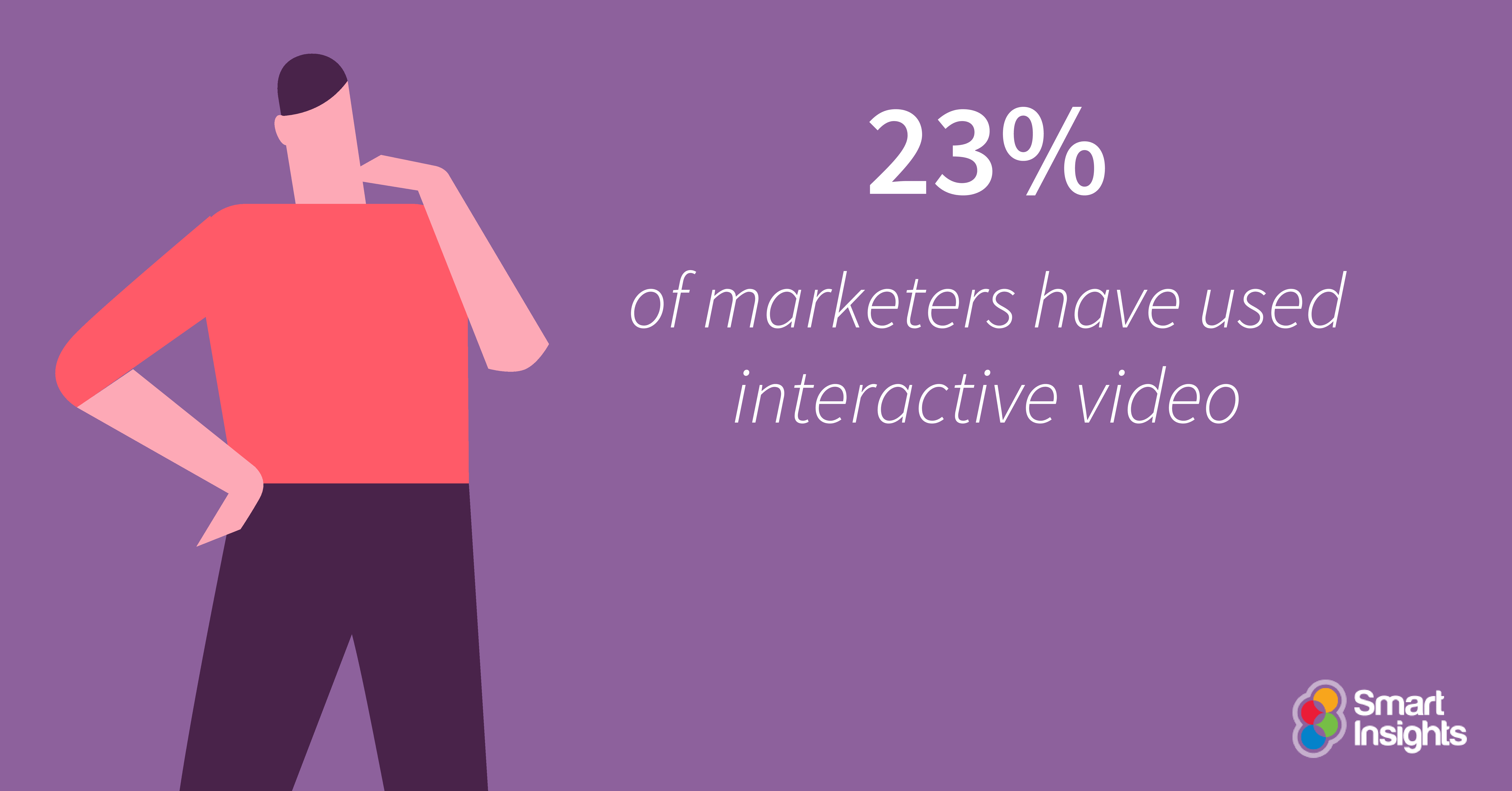
23% of marketers have used interactive video
One of the biggest emerging trends in video is interactive video, with 23% of marketers saying they have used it, which is up from 20% in 2018.
Not only are more brands starting to make use of interactive video those who are including it in their digital video marketing strategy are finding it successful. Of those who have used it 83% say it has been successful, which is an increase from the 78% who said the same in 2018.
In 2017, completion rates for interactive videos were around 90%, so they are highly engaging and help to offer a slightly personalized experience to viewers.
